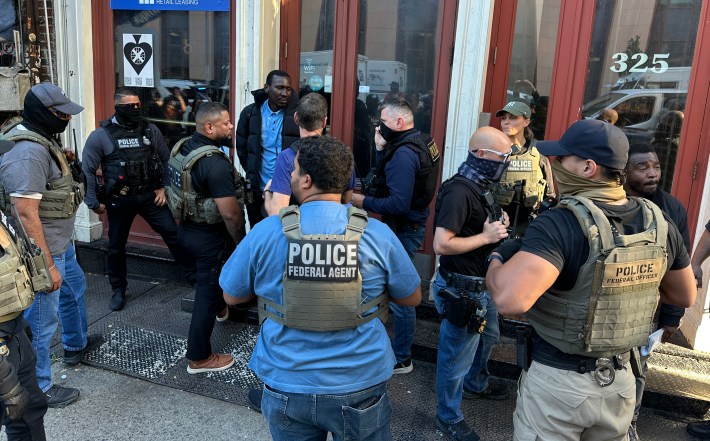The recent immigration raids on Canal Street are an outrage — and a distraction. The problem is not the vendors. The problem is Canal Street itself.
For decades, this corridor has been a civic failure: overrun by traffic, choked by fumes, lined with empty storefronts and narrow sidewalks that barely contain the daily crush of people. For decades (!), the city has studied the problems that beset Canal Street. The Department of Transportation has issued plan after plan. There have been “visioning” documents and “public engagement” sessions.
Yet nothing changes. Godot keeps us waiting on Canal Street.
Canal is not some forgotten side street. It is a crucial east–west corridor — the spine connecting SoHo, Tribeca, and Chinatown to the bridges and tunnels that move people and goods across the city. It is also one of New York’s most visible symbols of civic dysfunction: a place where transportation, design, enforcement, and community policy have all failed to meet in one coherent vision.
Nothing captures that neglect more starkly than the death of May Kwok, 63, who was killed on July 19, when a reckless driver in a stolen car sped off the Manhattan Bridge, jumped a curb at Canal Streets and slammed into her on a bench. She was sitting on one of the few places to rest along the entire corridor — a street so hostile to pedestrians that even sitting down can be fatal. This street, as it stands, serves no one. It represents the opposite of what any great city street should be.

I’ve written before about this cycle of inertia. The advocacy group Transportation Alternatives even has a specific campaign to Fix Canal. But the city has never truly faced the truth: Canal is a disaster because we’ve designed it to fail. Its chaos invites what economists call informal economies — the kind of small-scale, often unregulated commerce that emerges when formal systems fail to serve people’s needs. These informal markets shouldn’t be stigmatized; they reflect resourcefulness and survival. But on Canal, the conditions are so uncontrolled that the informal economy ends up crowding out vital sidewalk space and creates a constant, unpredictable tension with local law enforcement.
If anything, the city should legitimize and organize the vendors rather than await what seemed inevitable at this point — the descent on our streets of masked and unaccountable ICE agents to arrest them. Everyone sees the tables, the crowds, the counterfeit handbags. It’s no secret. And every once in a while, the NYPD storms in to clear the corners, only for the same tables and crowds to reappear days later. The cycle repeats endlessly, with no vision or courage to reimagine the corridor itself.
Walking on Canal Street every day, I often wonder why the city does not reclaim space — like the open-air parking lot nearby that functions mainly as a staging area for deliveries — for safe, orderly vending that could clear the sidewalks for everyone else. The city once tried something similar uptown with the 125th Street Vendors Market, known as Mart 125, a well-intentioned experiment that gave Harlem’s street vendors an indoor home in the mid-1980s. It reportedly failed from poor management and redevelopment pressure, but the model was sound — an effort to bring structure and legitimacy to street commerce instead of criminalizing it. Sadly, the idea was never fully realized. Yet it points in exactly the right direction for Canal Street: toward design, order, and inclusion, not chaos and constant enforcement.
Federal immigration enforcement has a defined role — but that role is not to police our streets or compensate for the city’s inaction. When ICE agents appear on Canal Street, it exposes how civic failure invites the wrong kind of intervention.
If Assembly Member Zohran Mamdani becomes mayor and is true to his vision for a fair, livable city, he will have to take on this long-ignored corridor once and for all. Fix Canal. Not by clearing the people — by fixing the street.






